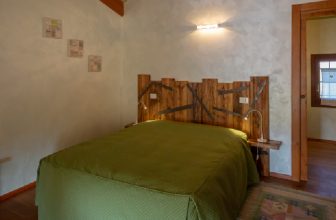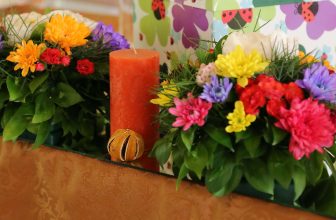How to Decorate with Fake Vines
Decorating with fake vines has become increasingly popular in interior design, offering a versatile and low-maintenance way to bring a touch of greenery into any space. Whether you’re looking to add a natural element to your home decor, create a lush backdrop for events, or enhance the ambiance of a retail or office space, fake vines provide endless possibilities for creativity and customization.

From draping them along shelves and mantels to weaving them into wreaths and floral arrangements, fake vines can mimic the beauty of real foliage without the need for watering or maintenance. In this article, we’ll explore various ways on how to decorate with fake vines, including tips for choosing the right type of vines, creative placement ideas, and maintenance tips to keep your faux greenery looking fresh and vibrant. Get ready to add a touch of botanical beauty to your surroundings with these innovative decorating ideas using fake vines.
The Rise of Indoor Greenery in Home Decor
The trend of incorporating indoor greenery in home decor has seen a significant rise over the past few years. This shift towards botanical interiors can be attributed to the growing awareness of the psychological and health benefits that plants bring to living spaces. Indoor greenery, from potted plants to sprawling fake vines, not only adds a vibrant splash of color but also transforms homes into tranquil sanctuaries.
The desire to bring the outdoors in reflects a broader movement towards wellness and sustainability, with individuals seeking to create a more natural and calming environment in their homes. Fake vines play a crucial role in this trend, offering the lush aesthetics of greenery without the upkeep. This convergence of convenience and beauty makes fake vines an attractive option for those looking to infuse their spaces with life and vitality, regardless of their gardening skills.
Benefits of Decorating with Fake Vines
Decorating with fake vines comes with numerous benefits, making it an appealing choice for both residential and commercial spaces. One of the primary advantages is the low maintenance required. Unlike real plants, fake vines do not need watering, pruning, or exposure to sunlight, saving time and effort for those with busy lifestyles or without a green thumb. Additionally, fake vines are durable and long-lasting, offering a perennial green aesthetic without the worry of seasonal changes or plant diseases.
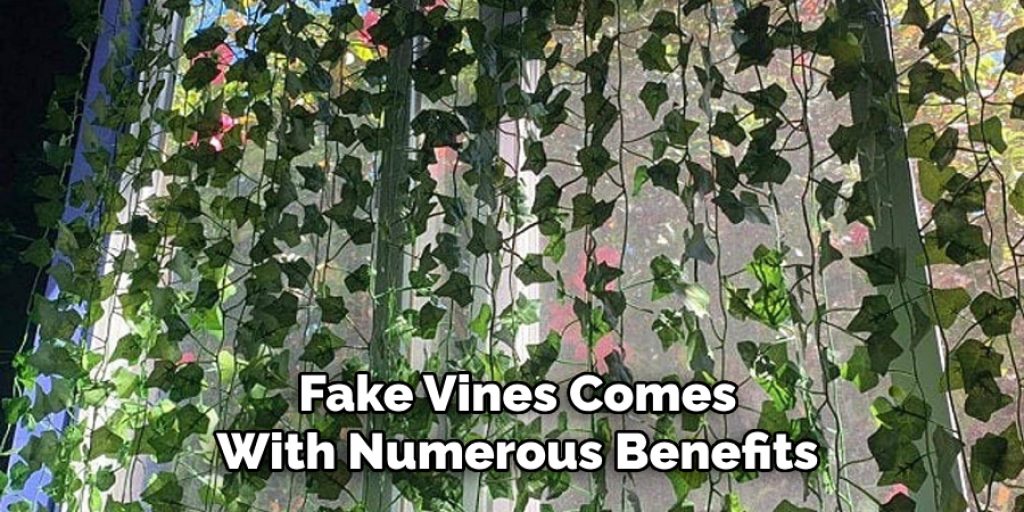
The versatility of fake vines is another significant benefit. They can be used in a variety of settings, from adding a green touch to office spaces to creating romantic backdrops for weddings. Fake vines can easily adapt to any decor style, whether it’s modern, rustic, or tropical, allowing for endless creativity in how they are displayed.
For people with allergies, fake vines provide a hypoallergenic alternative to real plants, ensuring the beauty of greenery without the discomfort that pollen and other plant allergens might cause. Lastly, fake vines offer an economical advantage. They are a cost-effective way to enhance spaces with lush, verdant accents without the ongoing expenses associated with real plant care, such as soil, fertilizer, and replacement of dead plants.
In sum, the benefits of decorating with fake vines are vast, encompassing ease of maintenance, durability, versatility, allergy relief, and cost-effectiveness. These advantages make fake vines a practical yet beautiful choice for adding a touch of nature to any space.
Understanding Fake Vines
Before incorporating fake vines into your decor, it’s crucial to understand the different types available and what makes them appealing. Fake vines are typically made from a variety of materials, including silk, plastic, and fabric, each offering its own set of characteristics in terms of appearance, feel, and durability.
Silk vines, for instance, provide a more realistic and delicate appearance but might require more careful handling to maintain their beauty. Plastic vines, on the other hand, are known for their durability and are suitable for outdoor settings where they need to withstand varying weather conditions. Fabric vines offer a nice balance between realism and durability, making them a versatile option for many decorating needs.
The quality of fake vines can vary significantly, with some mimicking the intricate details of real plant leaves and stems, and others presenting a more stylized or less natural look. High-quality fake vines not only look realistic but are also designed to be UV-resistant, ensuring that their color does not fade over time, even with exposure to sunlight. This aspect is particularly important for vines that will be used in well-lit areas or outdoors.
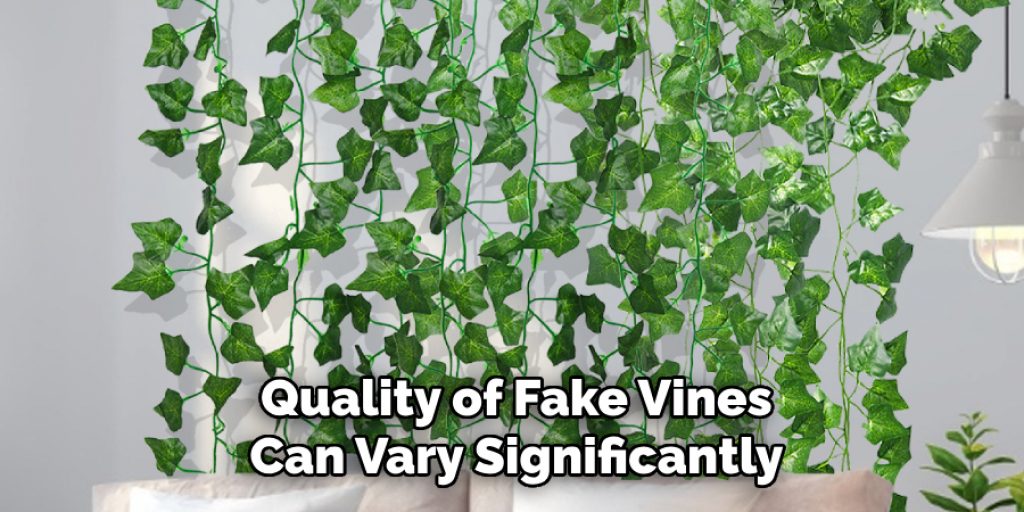
Another factor to consider is the flexibility and ease of use of the vines. Many fake vines come with built-in wires that allow you to shape and secure them as needed, making it easy to wrap them around columns, weave them through trellises, or drape them over surfaces for a natural, seamless look.
Understanding the characteristics and variety of fake vines available is the first step in selecting the right type for your project. By considering the factors of realism, durability, and flexibility, you can choose fake vines that not only enhance your decor but also meet your specific needs and preferences.
Definition and Types of Fake Vines
Fake vines, also known as artificial vines, are decorative elements designed to replicate the appearance of live vines and foliage without the need for maintenance that living plants require. These imitation plants offer a convenient and versatile means to bring the beauty and ambiance of greenery into any space, without the concerns of watering, sunlight, or seasonal changes. Fake vines are crafted from various materials, each bringing distinct qualities and advantages to suit different decorative purposes and settings.
The types of fake vines can be broadly categorized based on the materials they are made from:
- Silk Vines: Known for their realism and intricate detail, silk vines are prized for indoor settings where a close-up view makes the quality of the faux foliage apparent. They typically feature a delicate construction and may require gentle handling to keep them looking their best.
- Plastic Vines: Offering great durability, plastic vines are an ideal choice for both indoor and outdoor use. They can withstand the elements and variable weather conditions, making them suitable for balconies, patios, or any exterior space that needs a touch of greenery.
- Fabric Vines: Striking a balance between realism and durability, fabric vines are versatile enough for a variety of decorative projects. They often provide a realistic texture that can mimic real plants closely, making them a popular choice for interior decor.
- Foam Vines: Less common but equally versatile, foam vines offer a unique texture and are light in weight, making them easy to handle and install. They can be an economical option for large-scale projects where volume rather than intricate detail is the priority.
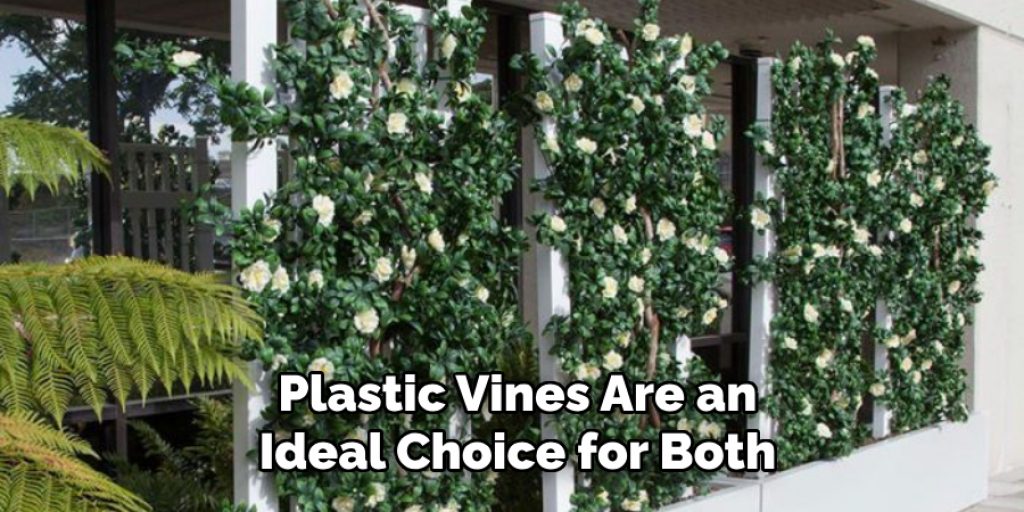
Understanding the different types of fake vines allows decorators and hobbyists alike to select the best option that meets their aesthetic desires as well as practical considerations. Whether the aim is to create a lush indoor oasis, a romantic wedding venue, or to simply add a pop of color to a workspace, there’s a type of fake vine suitable for every need and environment.
Advantages and Limitations of Fake Vines
Advantages
One of the most compelling advantages of fake vines is their low maintenance. Unlike real plants, they do not require watering, pruning, or specific lighting conditions, making them a practical choice for those lacking a green thumb or living in environments unsuitable for live plants.
Durability is another significant benefit; artificial vines are not susceptible to the diseases or pest infestations that can affect live plants, ensuring they remain an attractive feature over time. Versatility in use is evident, as fake vines can be placed in any location, regardless of natural light availability, and can be easily moved or replaced to update the look of a space. Additionally, they offer an aesthetically pleasing option for those with allergies to plant pollen, providing the beauty of greenery without the health drawbacks.
Limitations
However, there are limitations to consider. A key drawback is the lack of environmental benefits that live plants offer, such as air purification and the contribution to an area’s biodiversity. The realism of fake vines can vary considerably, with lower-quality options potentially detracting from the overall aesthetic of a space rather than enhancing it.
There’s also the ethical and environmental concern regarding the production and disposal of artificial plants, as they are often made from non-biodegradable materials like plastic, which contribute to waste in landfills. Additionally, some individuals may prefer the sensory experience of caring for live plants, which fake vines cannot replicate.
Choosing the Right Type of Fake Vines for Your Space
When selecting the perfect fake vines for your space, the decision should be guided by both functional and aesthetic considerations. Begin by assessing the area where you plan to integrate these artificial plants. For indoor spaces that may be subject to close scrutiny, such as living rooms or offices, opting for silk or high-quality fabric vines can provide the realism needed to convincingly mimic natural foliage. These materials boast the detail and texture that can withstand visual inspection up close.
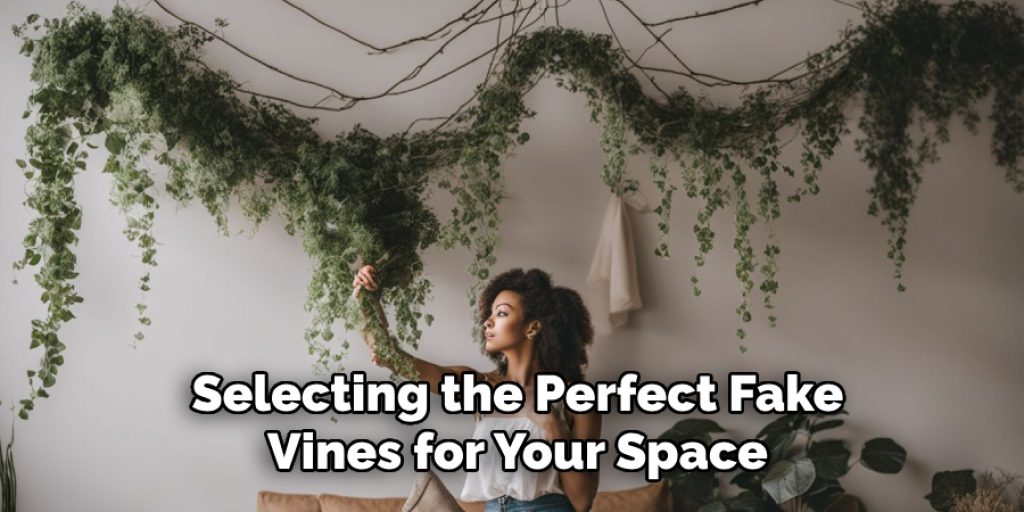
Conversely, for outdoor areas or spaces where durability takes precedence over minute detail—like patios, gardens, or outdoor event spaces—plastic vines are a more suitable choice. Their robust nature ensures they can endure various weather conditions without fading or deteriorating quickly. For those decorating on a budget or needing to cover large areas without prioritizing intricate detail, foam vines offer a cost-effective and lightweight solution.
Consideration of the space’s lighting conditions is also crucial. Certain materials may exhibit a more realistic appearance under specific lighting conditions. Silk and fabric vines, for instance, can look remarkably real in indoor lighting but might not hold the same appeal under the harsh glare of direct sunlight.
10 Methods How to Decorate with Fake Vines
1. Create a Faux Green Wall:
Use fake vines to create a lush and verdant green wall that adds a touch of nature to any indoor or outdoor space. Arrange the fake vines vertically along a wall or fence, securing them in place with hooks, nails, or adhesive strips. Mix different types of fake vines, such as ivy, pothos, or philodendron, to create texture and depth. Add artificial flowers or butterflies for a whimsical touch, and incorporate LED string lights for a magical evening ambiance.
2. Adorn Doorways and Archways:
Decorate doorways and archways with fake vines to create a charming and inviting entrance. Drape the fake vines along the top of door frames or arches, allowing them to cascade down the sides for a natural and romantic look. Pair the fake vines with fairy lights or sheer fabric for added elegance, and incorporate seasonal accents such as berries or pine cones for festive charm.
3. Accentuate Mirrors and Picture Frames:
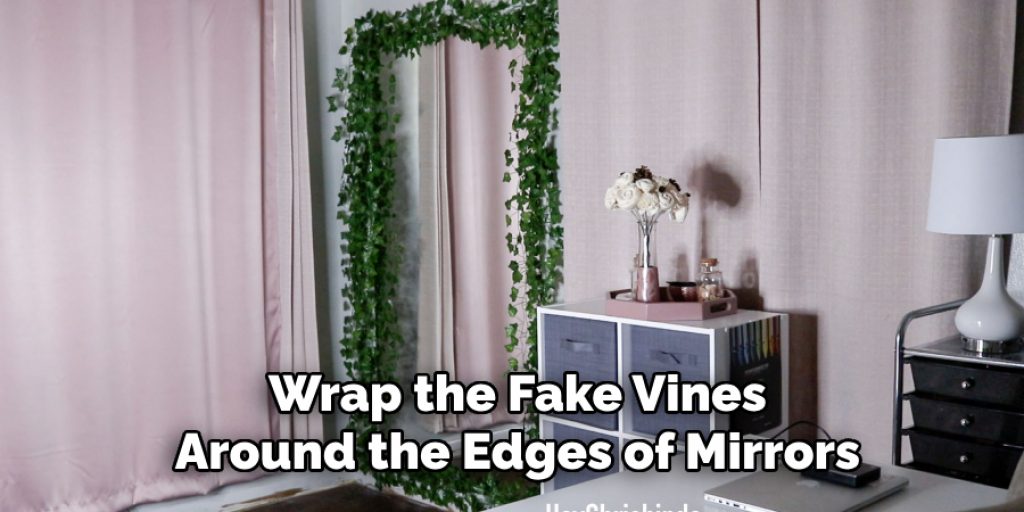
Add visual interest to mirrors and picture frames by embellishing them with fake vines. Wrap the fake vines around the edges of mirrors or picture frames, securing them with floral wire or adhesive tape. Allow the vines to trail down the sides or corners for a soft and organic effect. Integrate small artificial flowers or berries into the vines for a pop of color and dimension.
4. Create Table Centerpieces:
Use fake vines to create stunning table centerpieces that bring the beauty of the outdoors inside. Arrange the fake vines in a circular or cascading pattern around a vase or candle holder, incorporating other elements such as faux flowers, succulents, or decorative stones. Add LED candles or fairy lights for a warm and inviting glow, and customize the centerpiece to suit different seasons or occasions.
5. Enhance Window Treatments:
Elevate window treatments by incorporating fake vines into curtains or blinds. Attach the fake vines along the top edge of curtains or blinds using adhesive tape or small clips, allowing them to cascade down the sides for a soft and natural look. Pair the fake vines with sheer curtains for a romantic and airy ambiance, and accessorize with decorative curtain tiebacks or tassels for added flair.
6. Decorate Furniture and Shelving:
Transform plain furniture and shelving units into eye-catching focal points by decorating them with fake vines. Wrap the fake vines around the legs or arms of chairs, sofas, or tables, securing them with floral wire or twine. Drape the vines along the edges of bookshelves or display cabinets, allowing them to spill over the shelves for a lush and organic effect. Integrate small artificial flowers or greenery into the vines for added interest.
7. Design Floral Wreaths and Garlands:
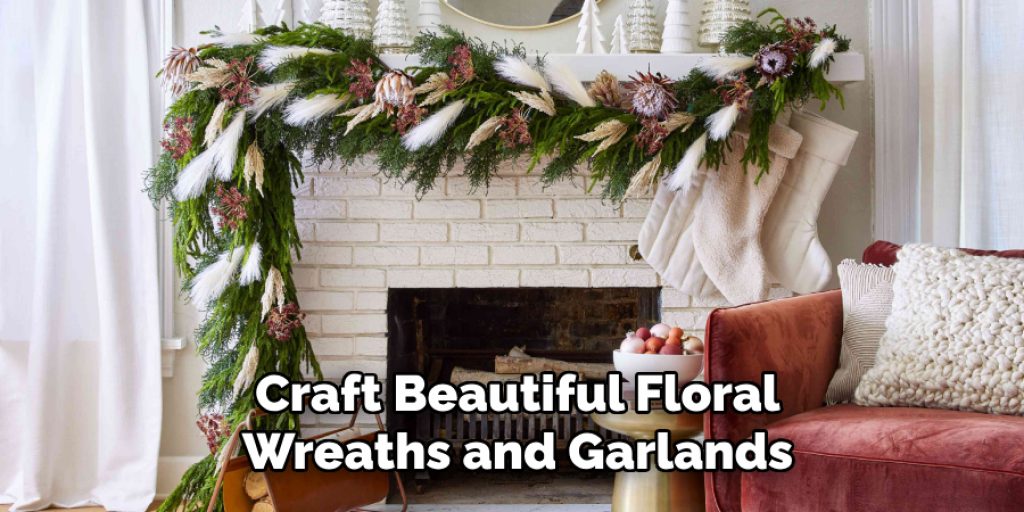
Craft beautiful floral wreaths and garlands using fake vines as the base. Form a circular or oval-shaped wreath with wire or foam, then attach the fake vines using floral wire or hot glue. Add artificial flowers, leaves, and berries to the wreath for a full and vibrant look, and embellish with ribbons, bows, or seasonal ornaments for a personalized touch. Hang the wreath on doors, walls, or mantels to add instant charm to any space.
8. Create Hanging Planters:
Hang fake vines in hanging planters or baskets to create a cascading garden effect indoors or on covered outdoor patios. Arrange the fake vines in the planters, allowing them to spill over the edges for a natural and relaxed look. Mix different types of fake vines with varying textures and colors to create visual interest, and incorporate artificial flowers or trailing plants for added depth and dimension.
9. Decorate Wedding and Event Spaces:
Use fake vines to decorate wedding and event spaces, adding a touch of romance and elegance to the decor. Hang fake vines from ceilings or beams to create stunning canopy effects above dining tables or dance floors. Drape the vines along banisters, railings, or pillars for a soft and ethereal ambiance. Incorporate fairy lights, candles, or lanterns for a magical evening atmosphere that dazzles guests and creates lasting memories.
10. Design Outdoor Landscapes and Gardens:
Use fake vines to enhance outdoor landscapes and gardens with year-round greenery and color. Integrate fake vines into trellises, arbors, or pergolas to create living walls or privacy screens that provide shade and visual interest. Incorporate fake vines into planters, hanging baskets, or window boxes to add vertical dimension and texture to garden beds and patio spaces. Mix fake vines with real plants and flowers for a seamless and low-maintenance outdoor oasis that looks beautiful year-round.
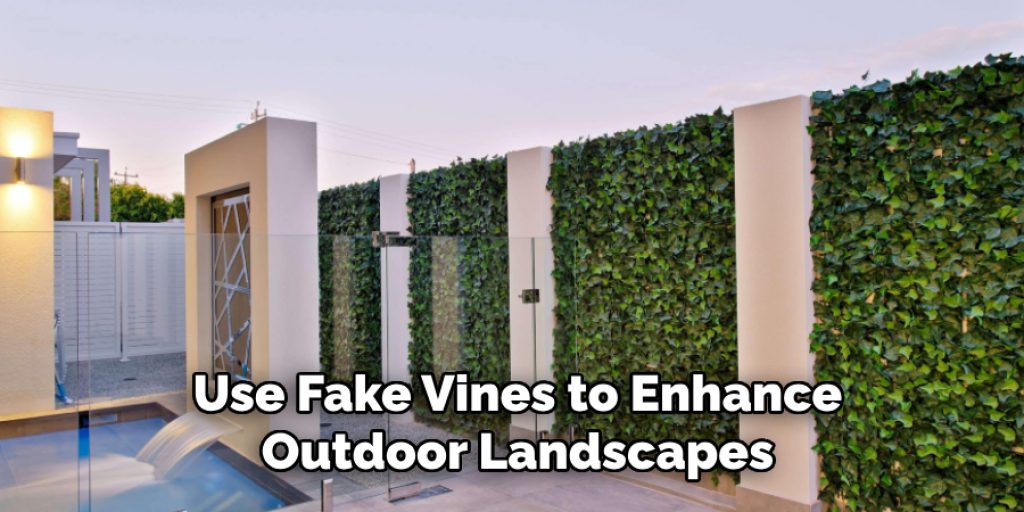
Conclusion
Incorporating fake vines into your decor is a versatile and low-maintenance way to bring the essence of nature indoors or to embellish outdoor spaces with a touch of greenery. Whether you’re aiming to create a serene green wall, add a romantic flair to doorways, or craft dynamic table centerpieces, fake vines offer endless possibilities to enhance the aesthetics of any space. Their durability and ease of care make them an excellent alternative to real plants, especially in environments where upkeep and natural light are limiting factors.
By applying the creative methods outlined above, you can transform ordinary spaces into enchanting retreats that captivate the senses and evoke a sense of tranquility and joy. With fake vines, the opportunity to infuse life and color into your surroundings is limited only by your imagination, allowing you to craft a personalized oasis that reflects your unique style and passion for nature’s beauty. Thanks for reading our blog post on how to decorate with fake vines! We hope you found it helpful and informative.

